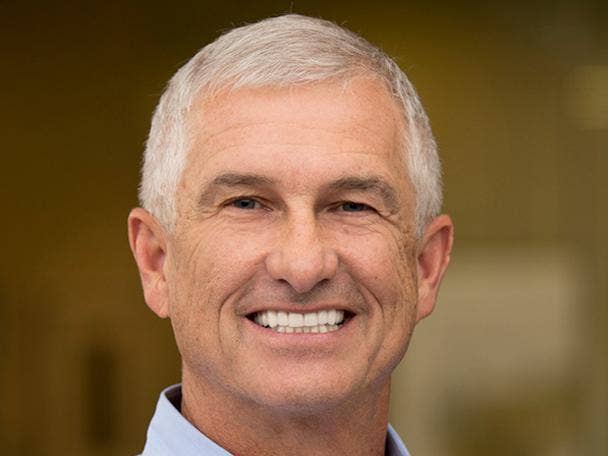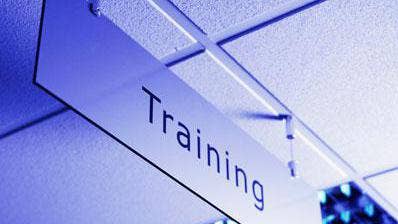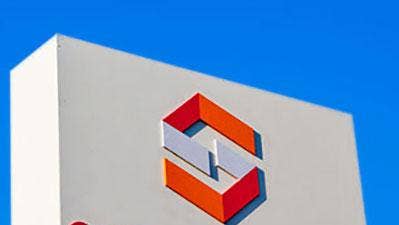ScanSource CEO Mike Baur On Distributor Consolidation, Intelisys
‘I think anything where you have fewer choices is not a positive. Most customers, most consumers, we all want choices, reasonable choices. But I think the key is, do you have value-added offers in the marketplace, enough of them, because if you don’t and if there’s not an opportunity to differentiate, then I think the magic goes out for this industry,’ says ScanSource CEO Mike Baur.

Channel Consolidation Not Always A Good Thing
Scansource CEO Mike Baur told CRN that consolidation in the channel in general risks going too far.
“I view consolidation historically for channel partners, our sellers and our suppliers, as not a positive,” Baur said in an interview. “I’ve never seen a positive come from that for the whole industry.”
The consolidation in distribution comes as distributors are continually re-invent themselves to keep up with and indeed stay ahead of the curves coming the channel’s way by adopting new cloud, edge, digital transformation, and similar technologies and turned them into products and services solution providers can then turn into recurring revenue.
In a wide-ranging interview, Baur also told CRN that the disruptions caused by supply chain issues are for not limited primarily to the need for more advanced planning to ensure that customers’ orders are shipped.
He also put in a pitch for ScanSource’s Intelisys telecom business for solution providers looking to embrace the recurring revenue model, but warned that they need to be prepared to spend three years before reaping the full rewards.
For a look at how ScanSource is doing in a sea of change, click through the slideshow.

How do you see what is happening as distribution consolidates, with things like Platinum Equity’s planned acquisition of Ingram Micro and the Synnex and Tech Data merger. What is happening in the channel in general?
For starters, we’ve been through supplier consolidation for many years. And in general, that wasn’t necessarily good for the industry because there was less innovation and less creativity and services. So on the supplier side, we didn’t see that being a net positive for the channel. On the channel partner side, our VARs and integrators, we’ve seen a lot of consolidation over the years with some of the larger companies that went public and started acquiring. That also lent itself to less value in the value chain because we saw people doing it just to get to a certain size and then they would be focused on SG&A (selling, general, and administrative expenses) leverage, and the next thing you know, the end customers have fewer choices and fewer services. So I view consolidation historically for channel partners, our sellers and our suppliers, as not a positive. I’ve never seen a positive come from that for the whole industry.
So if I go back to my history, I’m a guy from the PC industry back in 1989, when I was at Gates/FA. We were one of then about 100-plus distributors. And at that point, definitely there needed to be some consolidation. A hundred was way too many for the time, but certainly we quickly got down to enough good choices for suppliers to choose from and for channel partners. So my experience has been consolidation can go too far, I guess, is my conclusion, because you lose the incentives to differentiate and innovate. And we think that’s something that our company is known for. We want to continue doing that.
Do we risk seeing distribution consolidate too far?
Well, I think anything where you have fewer choices is not a positive. Most customers, most consumers, we all want choices, reasonable choices. But I think the key is, do you have value-added offers in the marketplace, enough of them, because if you don’t and if there’s not an opportunity to differentiate, then I think the magic goes out for this industry.
Does this industry today have enough value-added choices?
I’ll let you and the partners talk about it. I won’t comment for them.

How has the work-from-homemovement impacted ScanSource, and what do you see going forward? Do you see a return to the old normal, or do you see what has happened in the last year from the COVID-19 pandemiccontinuing to impact distribution and ScanSource in particular going forward?
So we see it as a tremendous opportunity for our industry. I mean, the fact is, as the market and customers move to a hybrid environment, which is what we keep hearing is the most likely next normal. I was watching sports this weekend. I saw all the hybrid commercials from IBM. You probably saw them, too. That’s all everybody’s talking about. So I think with hybrid as a story, what it means is that you’ve got to go back into those environments where you were on-premises and everybody was in one building, and retrofit them now. There’s a lot of refreshes, changes, and this is driven by new technologies that everybody wants to use not only locally, but also in all these remote environments. And so you’ve got bandwidth constraints, you’ve got technology that used to work. Heck, we were just talking about that here. We have a meeting scheduled for tomorrow and the room I want to do the meeting from, I can’t do it because the hardware in here won’t work with the software. And we sell this stuff, Joe. Ain’t that crazy? I think there’s going to be much more complex integration required in the hybrid world, which is a net positive to our industry, our channel, and our suppliers.
How about for ScanSource?
For ScanSource, for sure. I mean, when you think about the markets we play in, for example, if you talk about video conferencing and all of the different choices you have now versus just a couple of years ago, it’s staggering. And I love choices because it adds a way for a partner to differentiate. And so we have more offers now with our traditional audio/visual integrators than ever before, because now they don’t have to just use specific companies’ hardware. They can also now offer cloud-enabled endpoints.
Then for the industry, do you expect this impact to continue into the foreseeable future?
I think it’s a three- to five-year impact. I think it’s a long time because a lot of companies won’t be able to do all this today. They’ve got to put together a plan. And I think our partners are really good at figuring out how to do these things on scale. So I think it will be a long-term positive opportunity for our channel. I think it’s great.

One of the things that could slow that down could be some supply chain issues we're seeing, particularly chip shortages, but maybe some other products like displays. How are those shortages impacting the distribution business in general?
Well we had a couple of comments on that [during our conference call], and I’ll just repeat them. Basically we have seen minimal impact so far, but we are seeing much more discussion around it, and it’s requiring our suppliers and our supplier management team here at ScanSource to frankly spend a lot of time on those discussions and less time on creating new demand. So I think it’s a negative from that perspective, because we spent so much time now trying to figure out, ’How do I make sure this partner doesn’t get disappointed with their lead time or their product delivery time.’ So we’re having to touch orders more times now in this environment. So that’s a negative. It doesn’t mean we necessarily lose business, but it just kinda adds friction to our supply chain, and friction cost us money and time. And so nobody likes that.
From what you're seeing, is it going to get better before it gets worse or worse before it gets better?
I wish I had a crystal ball, man. I can tell you, our teams are not going to let us not do anything to make it better. It means we’re going to pull out all the stops and we’re going to work our partners and say, ’Hey, can you ship your shipment by a week or by day or by a month for planned deliveries?’ And so the key is, to me, it’s never about how long the lead time is. It’s how reliable it is, and consistent. And so once you get used to eight to ten weeks, you can manage that. It’s when you go from two weeks expectation to 10 weeks overnight, that’s when it screws everything up. But that’s not what we’ve seen. We’ve seen this happen now over a couple of quarters. And so our teams are getting comfortable with it. Everybody wants it to be better, but we can manage through this. But it does mean even for the rest of this year, we said through the fall, it’s going to be a challenge.

What's going on behind the scenes with Intelisys’ success?
Well, you know, the Intelisys business for ScanSource has been on a dadgum rocket ship since we acquired it in 2016. We’re in the sweet spot for the channel where everyone wants to know how they can sell recurring revenue and wants to have mailbox money that shows up every day. And that’s what this is all about. And so we’re trying our best to show how other parts of our channel can participate in the Intelisys recurring revenue story. And we keep adding new suppliers. We just added a new 5G supplier last week, Inseego. And so we keep adding new suppliers to our line card because they see that we have this channel that knows how to sell subscription and recurring revenue. And so it’s a very attractive place to be, if you’re a sales partner, to come join this Intelisys opportunity because it’s growing bigger every quarter.
So what are you doing right now to bring more traditional IT solution providers into the Intelisys recurring revenue system?
We have a whole catalog of offers, education, training support. But what really has to happen is the IT partner has to make a commitment for three years. It’s a three-year deal before they’re going to see a measurable return on their investment. So you’ve got to first, as the owner of a company or the president or CFO, you’ve got to decide, ’We’re in this for the long term because we see the benefits, and now we got find a way to get through the first three years.’ This is where what you used to sell in one transaction is now sold one 36th at a time every month for three years. And so it’s got to build over time, and you’ve got to have patience. You gotta believe that it’s the right place to be strategically, and you gotta have patience. And we can help. We can help shorten that three years. We have programs to advance commissions against their future commission stream to help a partner cash-flow their business in the early days. So we’ve got all kinds of ways to help.

What's been the uptake in partners for that? Can you quantify it?
We’ve said in the past that we have hundreds of VARs joining us. What we said [on the conference call] was that we had a growth in supplier billings of 69 percent year-over-year. So it’s building, and it’s building faster through that group than through the traditional agency channel. So it’s definitely getting traction
How many partners have made the switch?
We didn’t say [on the call]. And so unless I tell everybody, I gotta be careful. We’ll follow up and see when we can release that number to you and the rest of the community.

How often does somebody call ScanSource to ask, ’You want to sell the company?’
Well, we’re a public company, so people can buy us every day. We’ve been public since 1994, and every day somebody can buy our company. And so I’m ready.
Are you actively looking or not?
We couldn’t talk about it if we were. Public companies have all kinds of rules and discussions and all that, but for ScanSource, we’ve got a great balance sheet. We’re well positioned for the future. So from our perspective, we’re in great shape financially. We’re executing well. We’re looking to buy other companies.
What's your strategy for this year for acquisitions? What are you looking for?
We talk about our strategic plan internally a lot, and we talk about it on some of these calls. And as you’ve seen, the fastest growing parts of our business and the most profitable ones are generally where we want to continue to add people and capabilities. In some cases though, I’ll be honest, it’s better for the company if we just add more people. So in many cases, we’ll say, ’Hey, we could go buy a company that is in a business we like.’ But really a lot of the time we ended up deciding. ’Let’s build it ourselves.’ And so we’ll look and see what other companies are doing, and many times we’d rather do it ourselves. So if you see us adding head count, adding people, employees, and services, those are the areas where we’re trying to decide buy, build, or partner. So that’s our strategic plan internally: buy, build, or partner.
So where are you adding headcount right now?
As we talked about on the call, we said our Intelisys business is continuing add head count since last summer. And in other parts of our business that are growing well. So when you hear [us] talk about some of the parts of the business that are growing, anything like that that’s profitable, you should assume we’re hiring people for it.